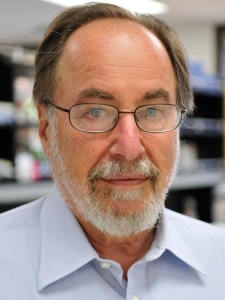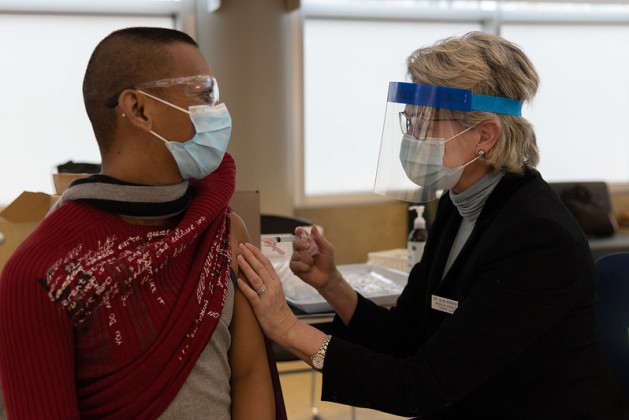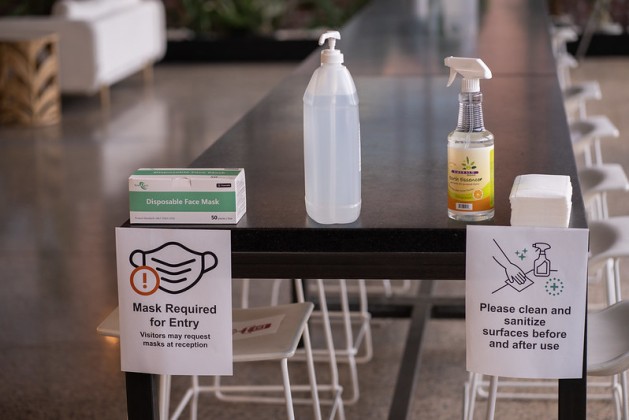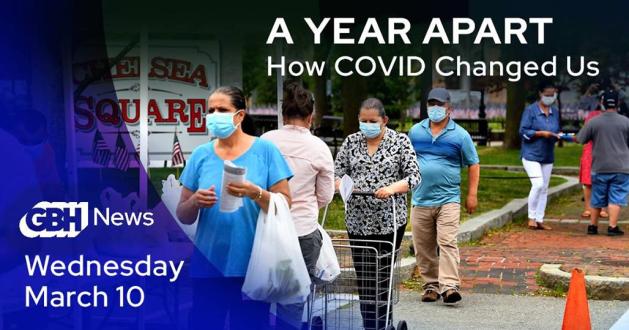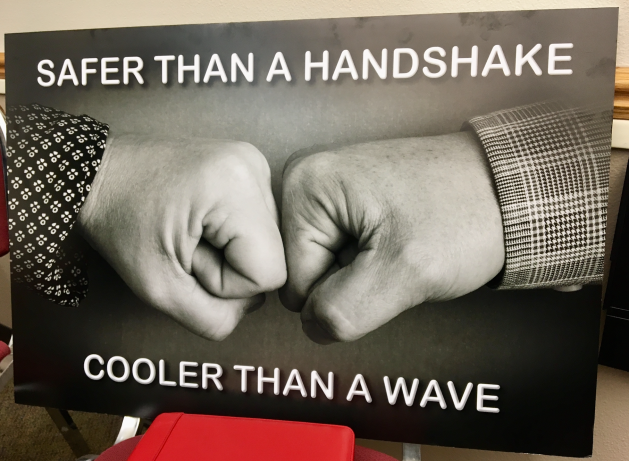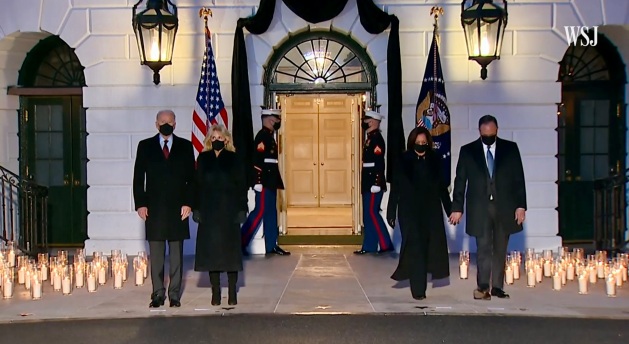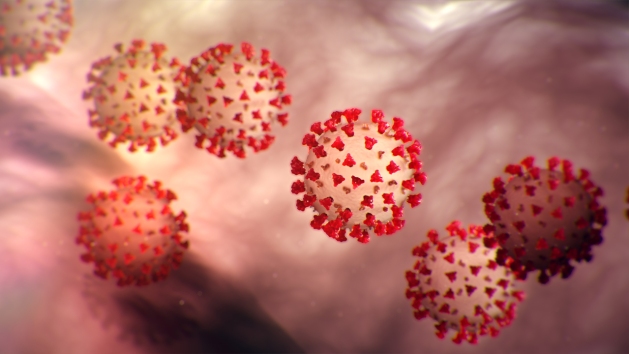
Illustration by the Centers for Disease Control and Prevention
Previously published at GBH News.
Howard Kurtz was in high dudgeon. The Fox News media critic opened his Sunday program, “Media Buzz,” this past weekend by blasting the press for dismissing the possibility that COVID-19 had its origins in a leak from a lab in Wuhan, China. That possibility is suddenly very much on the table, and President Joe Biden has ordered an investigation.
“It was a whack-job theory, right? It was Looney Tunes. It was trashy Trump talk, surely not worthy of serious journalistic attention,” Kurtz said. He added: “If President Trump said it, the media dismissed it. If conservatives embraced it, liberal pundits mocked it. This just speaks volumes about our media establishment. Now, nothing’s been proven, but the circumstantial evidence is growing. Will there be any soul-searching about what amounted to media malpractice? Don’t hold your breath.”
Kurtz’s monologue oversimplified what we know, but he was largely correct. In fact, the media sloppily mashed together two different stories about Wuhan — a legitimate line of inquiry that the virus had accidentally escaped from the lab and a conspiracy theory that Chinese scientists at the lab were developing COVID-19 as a bioweapon.
As a result, with just a few lonely exceptions, the mainstream press over the course of the past 15 months has dismissed any suggestion that COVID-19 came from the lab as so ludicrous that it was unworthy of coverage. The media’s credibility is taking yet another hit — this one entirely legitimate — at a moment when it is already at an all-time low. And their “shameful dereliction of duty,” as conservative Washington Post columnist Marc Thiessen put it, may make it that much harder to persuade Trump supporters to get over their skepticism about vaccinations.
The media’s dismissive attitude toward the lab-leak theory was grounded in their distrust — often warranted — of anything that came out of President Donald Trump’s mouth. After all, during the course of the pandemic Trump dismissed the seriousness of COVID-19 repeatedly, pushed unproven, potentially dangerous remedies like hydroxychloroquine, and even suggested at one memorable press briefing that injecting bleach might help.
So when Trump would use racist terms like the “China virus” in referring to COVID-19, the media were already primed to accept the consensus view touted by Dr. Anthony Fauci and the World Health Organization that the disease had, in fact, jumped from bats to humans in China and from there spread throughout the world.
Indeed, the possibility that COVID-19 had its origins in a Wuhan lab came to be seen as so thoroughly discredited that Facebook began taking down posts about it on the grounds that it was misinformation. The social-media giant reversed itself recently.
A few journalists, including Washington Post columnist Josh Rogin, kept the lab-leak theory alive. Rogin exploded on Saturday with a bitter tweet complaining that most mainstream reporters “actively crapped all over it for over a year while pretending to be objective.”
The tide finally started to turn when a pair of former New York Times reporters, first Nicholas Wade and then Don McNeil, wrote several weeks ago that they had come to regard the possibility of a lab leak as being as plausible as the bats-to-humans theory.
“I now agree with Nick’s central conclusion: We still do not know the source of this awful pandemic. We may never know,” McNeil wrote. “But the argument that it could have leaked out of the Wuhan Institute of Virology or a sister lab in Wuhan has become considerably stronger than it was a year ago, when the screaming was so loud that it drowned out serious discussion.”
Matthew Yglesias, a prominent member of the Substackerati, has offered what I think is the most useful and detailed analysis of what went wrong from a journalistic point of view. He traces much of it to inept reporting about U.S. Sen. Tom Cotton, an Arkansas Republican, who made some provocative statements early on about the possibility of a lab leak. Cotton is well-known as a China hawk, and pretty soon the media were falsely claiming that Cotton had touted the bioweapons fantasy, starting with a sensationalized account in Business Insider and then spreading from Politico and into the mainstream.
“At this point,” Yglesias wrote, “Cotton had achieved what’s really the greatest achievement possible for a Republican Party politician — he was unfairly maligned by the MSM.”
Also getting at an important part of what went wrong is Jonathan Chait of New York magazine, who points to Twitter as the place where mainstream journalists reinforced their views, making it that much harder to re-examine the lab-leak theory.
“Media coverage of the lab-leak hypothesis was a debacle, and a major source of that failure was groupthink cultivated on Twitter,” Chait said, calling the platform “a petri dish of tribalism and confirmation bias.”
So where does all this leave us? I’ll end where I began — with Howard Kurtz. Yes, he’s a conservative, and yes, he’s on Fox News. But he’s also a serious observer of the media who spent years at The Washington Post and CNN. His analysis can’t be easily dismissed. And I think he’s correct that animus toward Trump played a huge role in the media’s consensus that the lab-leak explanation for COVID was propaganda put out by the Trumpist right to deflect attention away from Trump’s numerous failures.
There’s a context that can’t be ignored, of course. Trump lied constantly. His horrendous mismanagement of the pandemic might go down as the greatest failure of any American president — unless you want to count his failure to abide by the results of a democratic election. It’s not difficult to see why journalists decided to accept Fauci’s word on the origins of the pandemic.
But they were wrong. The reality is that we don’t know where COVID-19 came from. The bats-to-humans explanation might be right. The lab possibility might be right. There’s a good chance that we’ll never know.
The whole point of journalism is to seek truth and report it. We failed to do that in this instance. And it ought to remind us of why we need to go about our jobs with humility and an open mind.
